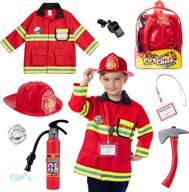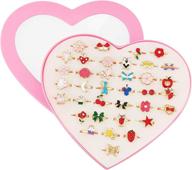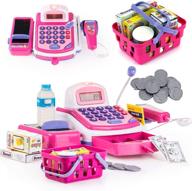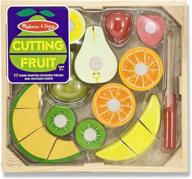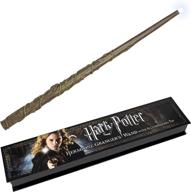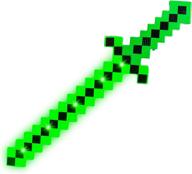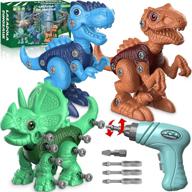Similar products
How can I help my child learn sorting skills?
Sorting is an important foundational skill for young children to develop. Being able to sort objects helps strengthen cognitive abilities, promotes logical thinking, and teaches classification. Here are some tips to help your child learn sorting:
Start simple
When first introducing sorting, keep it simple. Have your child sort by one attribute at a time, such as color, shape, or size. Mix together a collection of objects like blocks, buttons, balls, etc. that vary by that one trait and have your child sort into groups.
Use everyday items
Incorporate sorting into your child's daily routine. At cleanup time, have them sort toys into bins or shelves. When doing laundry, have them match and sort socks. Sorting silverware into the dishwasher trays also provides practice.
Try sorting games
- Memory match games where children turn over two cards at a time to find matches
- Mystery bag guessing game where child reaches in bag to sort items by touch only
- Sorting toys and games like shape sorters, block sorters, puzzles
Give positive reinforcement
Praise your child when they correctly sort items to encourage the behavior. Avoid criticism if they make a mistake though, just gently guide them to the right group.
With hands-on practice, sorting skills will continue to improve. Don't be afraid to increase the challenge as your child masters simpler sorting. Before you know it, they'll be grouping and classifying objects in their everyday environment.
What are fun ways to teach sorting to preschoolers?
Sorting activities help preschoolers strengthen cognitive abilities and learn classification skills. Here are some engaging ideas to teach sorting:
Sorting stations
Set up sorting bins or trays labeled with pictures representing categories. Provide collections of items like beads, buttons, blocks, etc. and have kids sort objects into the matching groups.
Themed sorting
- Farm animals and crops
- Transportation vehicles
- Shapes and colors
- Foods
Use themed manipulatives, toys or real objects related to topics preschoolers are learning about and have them sort into groups.
Sorting games
| Memory match | Turn over two cards at a time to find identical pairs to match |
| Mystery bag | Reach into a bag and sort items by touch only |
| Bingo | Sort called out items onto a bingo board |
Preschoolers love playing games and sorting games make learning fun.
Everyday sorting
Incorporate sorting into daily routines like cleaning up toys, sorting laundry, or sorting silverware into the dishwasher. This provides hands-on practice and reinforces sorting skills.
With a variety of interactive sorting activities, preschoolers will gain proficiency while having fun. Sorting lays the foundation for future math and reading skills as well.
How do I use this farmers market activity set for sorting lessons?
This vibrant farmers market activity set can be used to engage preschoolers in hands-on sorting lessons to build cognitive, math and classification skills.
Sorting by Category
The set comes with sturdy plastic fruits, vegetables, baked goods, dairy items and pantry staples. Dump all the pieces out and have kids sort into groups like produce, bakery items, dairy products etc. You can also sort into healthy and unhealthy foods.
Sorting Attributes
- Color - sort produce by color into red, yellow, green groups
- Size - sort from large items like watermelon to small like carrots
- Type - sort fruits and vegetables into separate groups
Asking kids to explain why they sorted items into certain groups develops critical thinking.
Matching Games
Print out duplicate pictures of the food items and play memory match games where children flip over two cards at a time to find identical pairs.
Dramatic Play
Use the pieces for imaginative farmer's market dramatic play. Kids can take on roles of shopkeeper and customer, handling money and making transactions. Or use as props for pretend play fruit stand.
Reinforcing Math Skills
The pieces can be used to explore concepts like weights and measurements, counting quantities, or recognizing numbers. Offer hands-on opportunities to strengthen early math abilities.
With engaging activities like these, the farmers market set brings sorting lessons to life and makes learning fun while supporting development of essential cognitive, math and critical thinking skills.
Top products in 🤹♀️ Pretend Play
What types of sorting games will my toddler enjoy?
Sorting games help build cognitive skills, hand-eye coordination, and color/shape recognition in toddlers. Here are some fun, interactive sorting activities toddlers will love:
Shape Sorters
Classic shape sorters allow toddlers to match basic shapes like circles, squares, stars through corresponding holes. Look for sorters with knobs or handles for easy grasping.
Color Sorting Boxes
| Sort colored bears or blocks into boxes labeled by color |
| Drop pom poms or beads into color-coded water bottles |
Matching colors reinforces early learning.
Size Sorting
- Nesting toys - start with largest piece and fit smaller pieces inside
- Stacking toys - build tower starting with the biggest piece on bottom
Grading objects from large to small teaches size differences.
Texture Sorting Bins
Let your toddler touch and sort items into groups like soft/rough, hard/squishy. Interesting textures include cotton balls, sandpaper, sponges, pom poms.
Sticky Wall Art
Apply strips of double-sided tape onto paper. Have your toddler stick pom poms, foam shapes, sequins onto the sticky surface to create sorting designs.
With the right tools and games tailored to their abilities, toddlers will grasp fundamental sorting concepts while having fun in the process.
How can I incorporate sorting into my child's daily playtime?
Sorting activities teach important skills like classification, organization, and logical thinking. With a bit of creativity, parents can incorporate sorting into a child's daily playtime routine through fun and engaging hands-on learning.
During Cleanup Time
- Sort toys back into labeled bins or shelves
- Match pairs of shoes, socks, mittens
- Stack blocks by color, shape, or size
With Art Supplies
Sort crayons, markers, or colored pencils back into boxes by color after art projects.
During Water Play
Provide measuring cups, spoons, funnels and containers for pouring and sorting by size and shape.
With Household Items
- Help sort laundry into piles by color or type
- Match socks from laundry basket
- Group canned goods from pantry into types
With Collections
Sort buttons, beads, seashells, rocks, leaves etc. Gathered items can be sorted by size, color, shape, or other attributes.
Weaving sorting into daily activities makes learning routine. Keep it simple at first, then increase difficulty as your child masters the basics. With consistent practice, sorting skills will steadily improve.
Another interesting products
How To Use Learning Resources Farmers Market Sorting Activity To Improve Sorting Skills?
The Learning Resources Farmers Market Sorting Activity is a great tool to help children improve their sorting skills. Here are some steps to use the sorting activity effectively:
- Introduce the sorting activity to your child and explain how it works.
- Encourage your child to sort the produce by color or type into the different baskets.
- Use the activity guide that comes with the set to create different sorting challenges for your child.
- Expand your child's vocabulary by naming the different types of produce and discussing their colors and shapes.
- Use the sorting activity to develop your child's counting skills by counting the number of pieces of produce in each basket.
- Play pretend with your child and use the produce to create different scenarios, such as a farmer's market or a grocery store.
- Use the sorting activity regularly to help your child develop their sorting skills and make it a fun and engaging learning experience.
What Age Range Is The Learning Resources Farmers Market Sorting Activity Suitable For?
The Learning Resources Farmers Market Sorting Activity is designed for children ages 18 months and up. It is suitable for toddlers and preschoolers who are learning to recognize colors and sort objects by type. The set includes 25 pieces of play food in 5 different colors, as well as 5 baskets, an activity guide, and stickers for labeling. The activity guide provides age-appropriate tips to encourage a fun learning experience. The set is perfect for developing color recognition, sorting, and vocabulary skills. Children can expand their vocabulary by naming familiar favorites and learning new foods. The set is also great for developing counting skills by counting the number of pieces of produce in each basket. Overall, the Learning Resources Farmers Market Sorting Activity is a great tool for parents and educators to help children improve their sorting skills in a fun and engaging way.
Are There Any Safety Concerns With The Learning Resources Farmers Market Sorting Activity?
The Learning Resources Farmers Market Sorting Activity is generally considered safe for children to use. However, as with any toy, there are some safety considerations to keep in mind:
Overall, the Learning Resources Farmers Market Sorting Activity is a safe and fun toy for children to use under adult supervision.
Are The Materials Used In The Learning Resources Farmers Market Sorting Activity Safe For Children?
According to the product descriptions on various websites, the materials used in the Learning Resources Farmers Market Sorting Activity are safe for children to use. The play food is made of plastic and the baskets are made of sturdy plastic. However, as with any toy, there are some safety considerations to keep in mind. The set contains small pieces that could be a choking hazard for young children, so adult supervision is recommended during playtime. Additionally, the play food could potentially break or crack, creating sharp edges. Parents should check the pieces regularly for signs of wear and tear and replace any damaged pieces. Overall, the Learning Resources Farmers Market Sorting Activity is a safe and fun toy for children to use under adult supervision.





